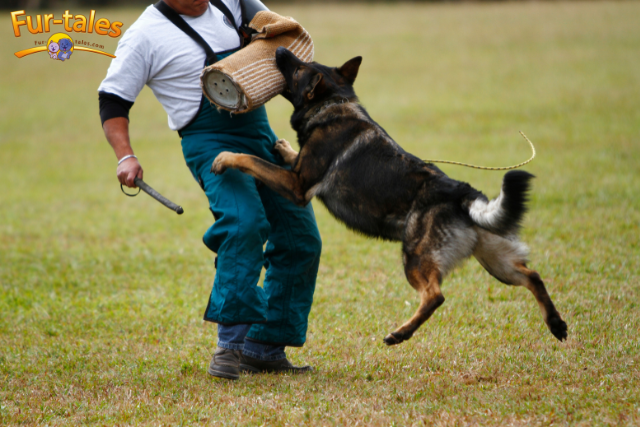
Easiest Dog Breeds to Train: A Guide for First-Time and Experienced Owners
Bringing a dog into your life is a big decision, and one of the most important factors to consider is how easy your new canine companion will be to train. While every dog is unique, some breeds are naturally more receptive to commands, quicker to learn, and more eager to please. Whether you’re a first-time pet owner or an experienced dog lover looking for a smoother training experience, choosing one of the easiest dog breeds to train can set you up for success.
Training isn’t just about obedience—it’s also a critical component of bonding, mental stimulation, and safety. In this article, we’ll explore the top dog breeds that are known for their trainability, explain what makes them so responsive, and provide tips for maximizing your training sessions.
What Makes a Dog Easy to Train?
Before diving into specific breeds, it’s helpful to understand what contributes to a dog’s trainability:
- High intelligence: Dogs that can quickly understand commands or routines are easier to train.
- Strong work ethic: Breeds developed for tasks (herding, retrieving, assisting) often aim to perform well.
- Eagerness to please: Dogs that enjoy making their owners happy are more likely to respond to training positively.
- Social temperament: Friendly, confident dogs usually focus better in a learning environment.
- Consistency in behavior: Dogs that are less prone to mood swings or anxiety adapt faster to structured learning.
Top 7 Easiest Dog Breeds to Train
1. Border Collie
Often considered the Einstein of the dog world, the Border Collie is unmatched in intelligence and agility. Originally bred to herd sheep, they thrive on mental and physical stimulation.
Training Traits:
- Quick to learn complex commands
- Highly focused and task-driven
- Best suited for active owners
Tip: Use advanced tricks and agility training to keep them engaged.
2. Labrador Retriever
Friendly, loyal, and consistently ranked among the most popular dog breeds, Labs are as eager to learn as they are to please.
Training Traits:
- Food-motivated, which makes positive reinforcement very effective
- Patient and gentle temperament
- Great for service work and therapy
Tip: Start training early, as they tend to be excitable puppies.
3. Golden Retriever
Another favorite for families and service work, Golden Retrievers combine intelligence with an affectionate, calm demeanor.
Training Traits:
- Natural desire to please their owners
- Easily house-trained
- Gentle with children and other animals
Tip: Use short, consistent sessions and praise often.
4. Poodle
Poodles (including Toy, Miniature, and Standard varieties) are highly intelligent and adaptable. They’re often underestimated due to their fancy appearance.
Training Traits:
- Quick learners, especially with verbal and hand cues
- Enjoy structured activities like obedience and agility
- Bond deeply with their owners
Tip: Keep training interesting with variety and challenge.
5. German Shepherd
Known for their work in police and military service, German Shepherds are loyal, protective, and highly trainable.
Training Traits:
- Strong command retention
- Excellent problem-solving skills
- Naturally obedient when properly socialized
Tip: Begin socialization early to curb overprotective behavior.
6. Papillon
Don’t be fooled by their small size—Papillons are alert, energetic, and fast learners, making them one of the most trainable toy breeds.
Training Traits:
- High energy and attention span
- Picks up tricks quickly
- Great for dog sports and agility
Tip: Keep sessions short and fun to match their lively nature.
7. Doberman Pinscher
While known for their guarding instincts, Dobermans are surprisingly easy to train when raised in a loving and consistent environment.
Training Traits:
- Highly intelligent and motivated
- Thrive on leadership and structured routines
- Loyal and obedient to family members
Tip: Firm, positive reinforcement is key—never use harsh methods.
Comparison Table: Easiest Dog Breeds to Train
| Breed | Size | Intelligence Level | Best For | Training Tip |
|---|---|---|---|---|
| Border Collie | Medium | Exceptional | Active individuals or farms | Use games and advanced tasks |
| Labrador Retriever | Large | High | Families, first-time owners | Reward with treats and praise |
| Golden Retriever | Large | High | Families, therapy work | Be consistent and affectionate |
| Poodle | Varies | Very high | Urban homes, allergy sufferers | Mix up commands to avoid boredom |
| German Shepherd | Large | High | Working roles, experienced owners | Focus on early socialization |
| Papillon | Small | High | Apartment dwellers, agility fans | Keep lessons short and energetic |
| Doberman Pinscher | Large | High | Active, confident owners | Use positive structure and boundaries |
Tips for Training Any Breed
Even the easiest dogs to train need the right environment and approach. Here are some general tips to improve your success:
- Be patient: Some days will go better than others.
- Stay consistent: Use the same words and gestures every time.
- Keep sessions short: 10–15 minutes is ideal, especially for puppies.
- Use rewards: Praise, treats, and toys are great motivators.
- Socialize early: Expose your dog to different environments, people, and pets.
What to Avoid in Training
While every dog is trainable to some extent, avoid the following common pitfalls:
- Inconsistent commands: Switching phrases (e.g., “down” vs. “off”) confuses dogs.
- Negative reinforcement: Yelling or punishing may damage trust.
- Lack of mental stimulation: Bored dogs develop behavioral issues.
- Pushing too hard: Let your dog progress at their pace.
FAQs
Q: Can any dog be trained, regardless of breed?
A: Yes, all dogs can be trained with the right approach. However, some breeds respond faster due to their intelligence and temperament.
Q: What’s the best age to start training a dog?
A: You can begin basic training as early as 8 weeks old. The earlier you start, the easier it is to establish good habits.
Q: Are mixed breeds easy to train?
A: Absolutely! Mixed breeds often inherit the best traits from both parents. Success depends more on consistency than breed alone.
Q: Is professional training worth it?
A: If you’re unsure or facing specific challenges, professional trainers can provide invaluable support, especially for reactive or anxious dogs.
Q: Which breed is best for first-time owners?
A: Labrador Retrievers and Golden Retrievers are generally ideal due to their friendly nature and eagerness to please.
Image Designed Using Canva
